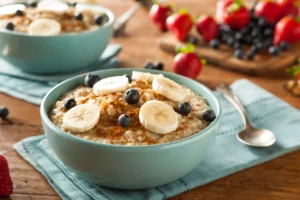
Building strength and muscle with a balanced back and chest workout can give you remarkable results when done right. Targeting these major muscle groups not only enhances your upper body but also improves your overall fitness, helping you achieve a more symmetrical physique. The key to success lies in choosing the right exercises, focusing on proper form, and gradually increasing intensity. A well-structured routine ensures that you effectively engage your back and chest muscles for maximum growth and endurance. Let’s dive into the content to learn more.
The Ultimate Back and Chest Workout for Balanced Gains
Achieving balanced gains in your back and chest requires a workout routine that targets both muscle groups evenly and effectively. The key is to incorporate a mix of compound movements like bench presses and deadlifts, which engage multiple muscles simultaneously, along with isolation exercises such as dumbbell flyes and lat pulldowns. This combination ensures that the muscles are worked thoroughly, promoting strength and muscle growth without overemphasising one area over the other. By alternating between pushing exercises for the chest and pulling exercises for the back, you engage both muscle groups in a way that enhances their development, leading to better symmetry and overall physique.
Rest and recovery are just as crucial as the exercises themselves. To truly see the results of your workout, it’s essential to allow your muscles time to heal and grow. Incorporating rest days and focusing on proper nutrition, such as protein intake, will help ensure that the muscles rebuild stronger and larger. Additionally, paying attention to form during each exercise is vital for preventing injury and maximising the efficiency of each movement, allowing for long-term, sustainable growth.
The Science Behind Muscle Hypertrophy in Chest and Back Training
Muscle hypertrophy, the process of increasing muscle size, happens when muscle fibres are stressed and damaged, leading the body to repair and strengthen them. To achieve optimal results with back and chest exercises for mass, it’s crucial to apply progressive overload. This method involves steadily increasing weight, reps, or intensity, forcing the muscles to adapt and grow. Key exercises like bench presses, rows, and pull-ups effectively target the major muscles in the chest and back, promoting muscle fibre breakdown and engagement.
Equally vital is the balance between training volume and recovery. Workouts should be challenging enough to fatigue the muscles but not too intense to hinder recovery. Adequate rest and nutrition are essential for muscle repair and growth. When paired with well-planned programming, this approach to chest and back training ensures consistent muscle mass development over time.
Essential Exercises to Strengthen Your Upper Body
Building a strong upper body requires a well-structured muscle growth workout plan that includes essential exercises targeting key muscle groups such as the chest, back, shoulders, and arms. To maximise strength and muscle development, incorporating a mix of compound movements and isolation exercises is crucial. Bench presses and push-ups are excellent for engaging the chest, while rows and lat pulldowns effectively target the back. These exercises activate multiple muscle fibres, promoting both size and strength gains efficiently.
Adding isolation exercises like dumbbell flyes for the chest and face pulls for the upper back will refine your physique, allowing for focused muscle contractions that enhance definition and balance. Including these exercises in your muscle growth workout plan ensures a comprehensive approach to upper body strength and development.
How to Structure Your Workout for Maximum Growth
To maximise muscle growth in your chest and back, structuring your workout is crucial. Begin with compound exercises like bench presses and deadlifts, which target multiple muscle groups and allow for heavier weights, stimulating greater overall development. These movements contribute significantly to overall muscle strength by engaging a wide range of muscles. After your compound lifts, transition to isolation exercises such as dumbbell flyes and lat pulldowns to focus on specific areas and enhance muscle engagement. Balancing between these two types of movements helps ensure that you are both building strength and developing muscle definition.
Additionally, alternating between push and pull exercises during your session can keep mussels fresh and prevent fatigue, allowing you to maintain proper form throughout the workout. This balance promotes optimal muscle activation while reducing the risk of injury. Lastly, don’t forget to incorporate progressive overload by gradually increasing your weights or reps each week. This steady progression ensures that your muscles continue to grow and adapt over time, leading to consistent gains.
The Role of Proper Form in Avoiding Injuries and Optimising Results
Maintaining proper form during best back exercises is crucial for both injury prevention and achieving optimal results. Incorrect technique can cause muscle strain, joint stress, and long-term damage, hindering your progress and causing setbacks. Ensuring that each movement in your back workouts is performed with control and precision not only protects your body but also helps engage the correct muscles more effectively, allowing for more efficient growth and strength development.
Incorporating good form into your best back exercises also enhances workout quality. By focusing on controlled movements and avoiding rushed reps, you increase muscle activation and improve endurance, ensuring consistent gains over time.
Progressive Overload: The Secret to Continuous Muscle Development
Progressive overload is a key strategy for achieving sustained muscle building, ensuring your workouts stay effective over time. The concept is straightforward: as your muscles adjust to a certain load, you need to gradually increase the resistance to continue challenging them. This can involve adding weight, increasing repetitions, or adjusting the tempo of your exercises. By consistently applying progressive overload, you engage muscle fibres in new ways, encouraging them to repair and grow stronger after each session.
When implementing progressive overload, it’s crucial to track your progress. Maintain a workout log to record your weights and reps, ensuring you’re consistently pushing beyond previous limits while maintaining proper form. This method helps prevent plateaus and reduces the risk of injury. The goal is to make gradual, steady improvements that push your body without overwhelming it. With patience and dedication, progressive overload can significantly enhance your muscle building journey.
Why Rest and Recovery Are Critical for Building Muscle Mass
Rest and recovery are crucial aspects of any effective chest workout routine, as they are just as important as the workout itself. During intense chest exercises, the muscles undergo tiny tears in the fibres. The recovery period is when the body repairs these tears, making the chest muscles stronger and more defined. Neglecting proper rest can disrupt this process, leaving the muscles fatigued and more prone to injury. By allowing adequate recovery time, the muscles can rebuild efficiently, ensuring future workouts are performed with maximum strength and effectiveness.
Incorporating rest days into your chest workout routine not only aids muscle recovery but also allows the nervous system to recharge, improving coordination and strength for your next session. Additionally, rest helps regulate vital hormones such as testosterone and growth hormone, which are essential for muscle repair and growth. Supporting your recovery with quality sleep, balanced nutrition, and active recovery techniques like stretching or light cardio will help you consistently make progress and reach your chest development goals.
Nutrition Strategies to Support Your Back and Chest Muscle Growth
To truly maximise the results of your back and chest workouts, it’s essential to focus not only on the exercises but also on the nutrition that fuels your muscle growth. A well-rounded meal plan rich in protein, healthy fats, and complex carbohydrates will help repair and build muscle tissue after every session. Incorporating foods high in amino acids, such as lean meats, eggs, and legumes, can aid in faster recovery and sustained muscle development.
At Health Advisor Talk, we strive to provide the best authentic information to help you achieve your fitness goals efficiently. Pairing the right workout routine with smart nutrition choices will ensure you’re on the path to stronger, more defined back and chest muscles.








